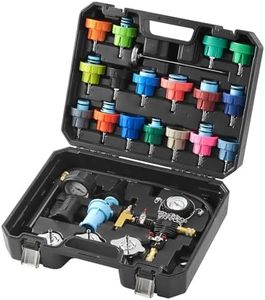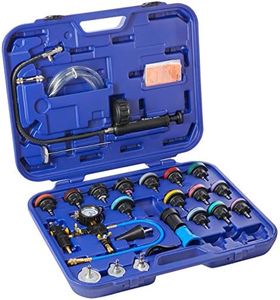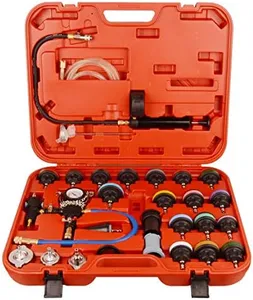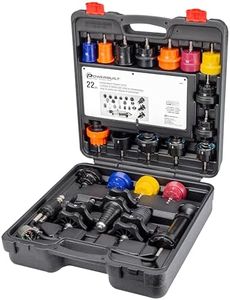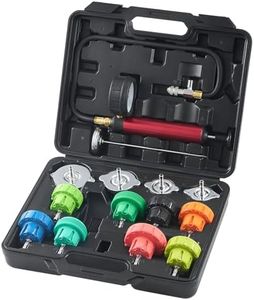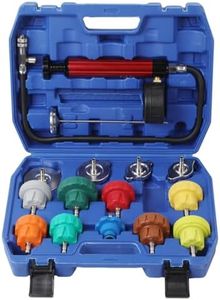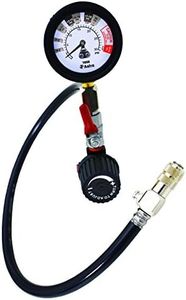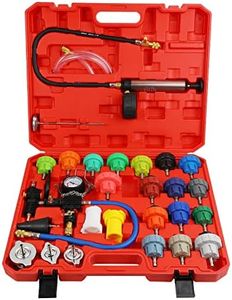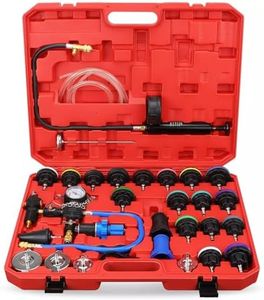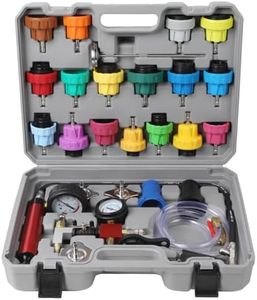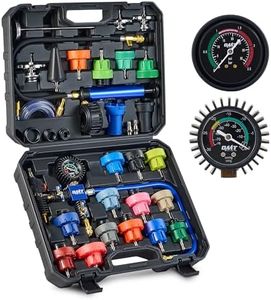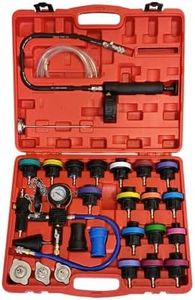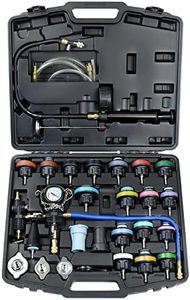We Use CookiesWe use cookies to enhance the security, performance,
functionality and for analytical and promotional activities. By continuing to browse this site you
are agreeing to our privacy policy
10 Best Coolant Pressure Tester Kit
From leading brands and best sellers available on the web.By clicking on a link to a third party's website, log data is shared with that third party.
Buying Guide for the Best Coolant Pressure Tester Kit
Choosing a coolant pressure tester kit might seem a bit technical, but anyone can do it with a little understanding of what the tool does and what features matter most. A coolant pressure tester kit is used to check for leaks and weaknesses in a vehicle’s cooling system by pressurizing it with air. When picking the right tester kit, focus on how easy it is to use, how versatile it is with different vehicles, and the durability of its parts. The goal is to find a kit that fits your needs, whether you’re a casual car owner or someone who works on vehicles regularly.Compatibility (Adapters and Caps)Compatibility refers to how many types of vehicles or radiator caps the tester kit can work with. This is important because cars and trucks often have different shapes and designs of radiator and coolant reservoir caps. Kits with more adapters can work on a wider range of vehicles, which is great for someone who might work on different makes and models. Smaller sets may only fit a few vehicles, which works if you only need it for your own car. If you’re likely to use the kit on many vehicles (for example, in a busy garage or with multiple family cars), choose a set with a wide variety of adapters to cover all your bases.
Pressure RangeThe pressure range means the highest and lowest pressure levels the tester can produce safely and measure accurately. This matters because different vehicle systems have different pressure limits. Light vehicles often use a range up to 15 psi, while larger vehicles might require more. Most home users will find a tester that goes up to 20-30 psi more than enough. If you’re working only on passenger cars, a standard range is fine. For work on bigger vehicles or trucks, make sure your kit can reach the pressures you need.
Pump Type and Ease of UseThe pump is the part you squeeze or press to add air to the cooling system. Easy-to-use, ergonomic pumps reduce fatigue and make testing simpler, especially if you’re new to car repairs. Some kits have pistol-style handles that are more comfortable, while others are basic. Consider how much effort it takes to pump and whether the pump feels solid in your hand. If you want quick, simple tests now and then, look for a straightforward design. If you might do lots of testing, comfort and quality become more important.
Gauge Quality and AccuracyThe gauge shows you the pressure and helps you spot any drop that can indicate a leak. Quality and accuracy are key, because a hard-to-read or unreliable gauge can give you the wrong idea about your cooling system. Look for clear, easy-to-read numbers, ideally with markings at common pressure levels. If you need precise results for diagnosing tricky leaks, prioritize kits with high-quality gauges. For occasional use, as long as you can read the numbers at the pressures you need, you’ll be fine.
Build Quality and MaterialsBuild quality is about how tough the kit and its parts are, including the hoses, adapters, case, and connections. Good materials mean your kit will last longer and be safe to use under the pressure the system generates. Metal adapters are sturdier than plastic, and reinforced hoses last longer. If you’ll use the kit a lot, or want to keep it for many years, focus on stronger materials. If you just need something for a few jobs, you might be okay with lighter build quality.
Included Accessories (Case, Extra Tools)Some kits come with extra tools like refill attachments, thermometer probes, or strong carrying cases. Accessories can make testing easier and help keep parts organized. If you value convenience and storage, look for a kit that includes these extras. For basic at-home use or if you already have tools, a simpler kit may be enough.
